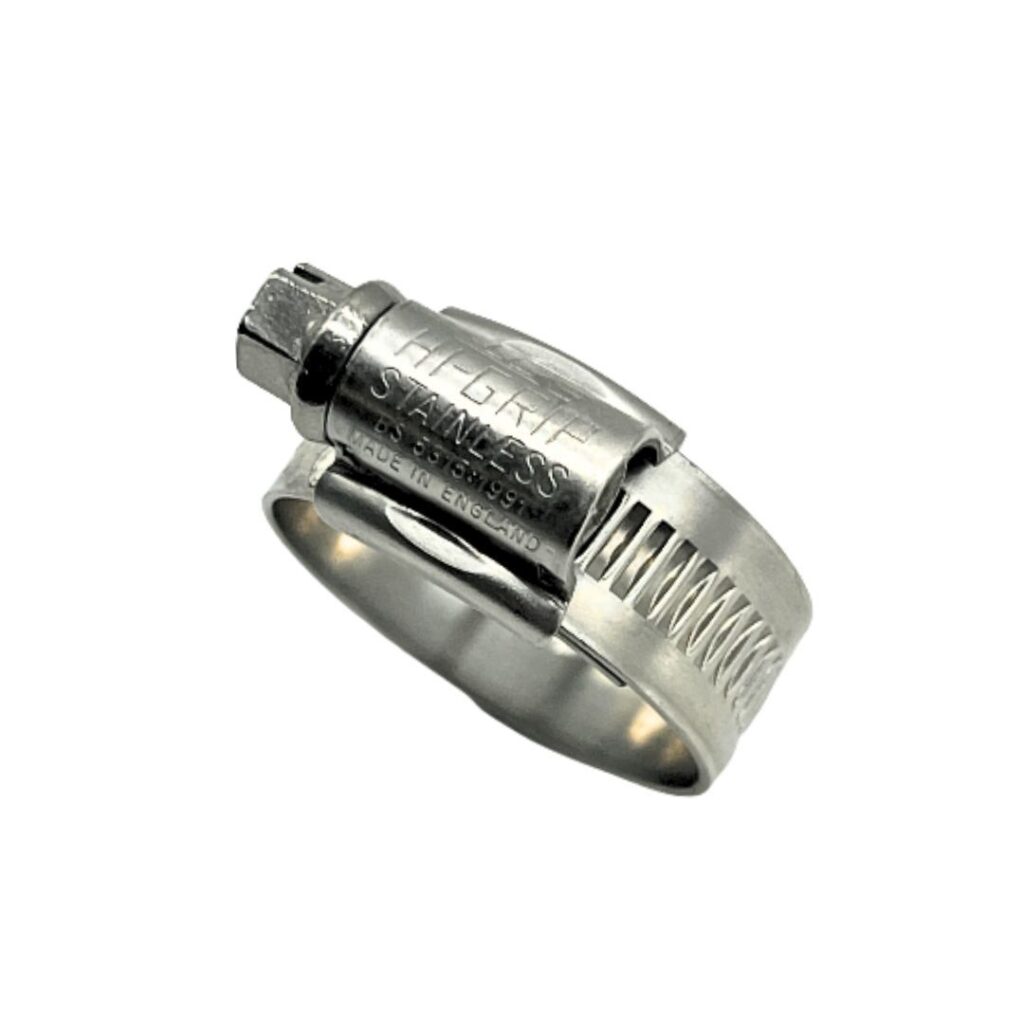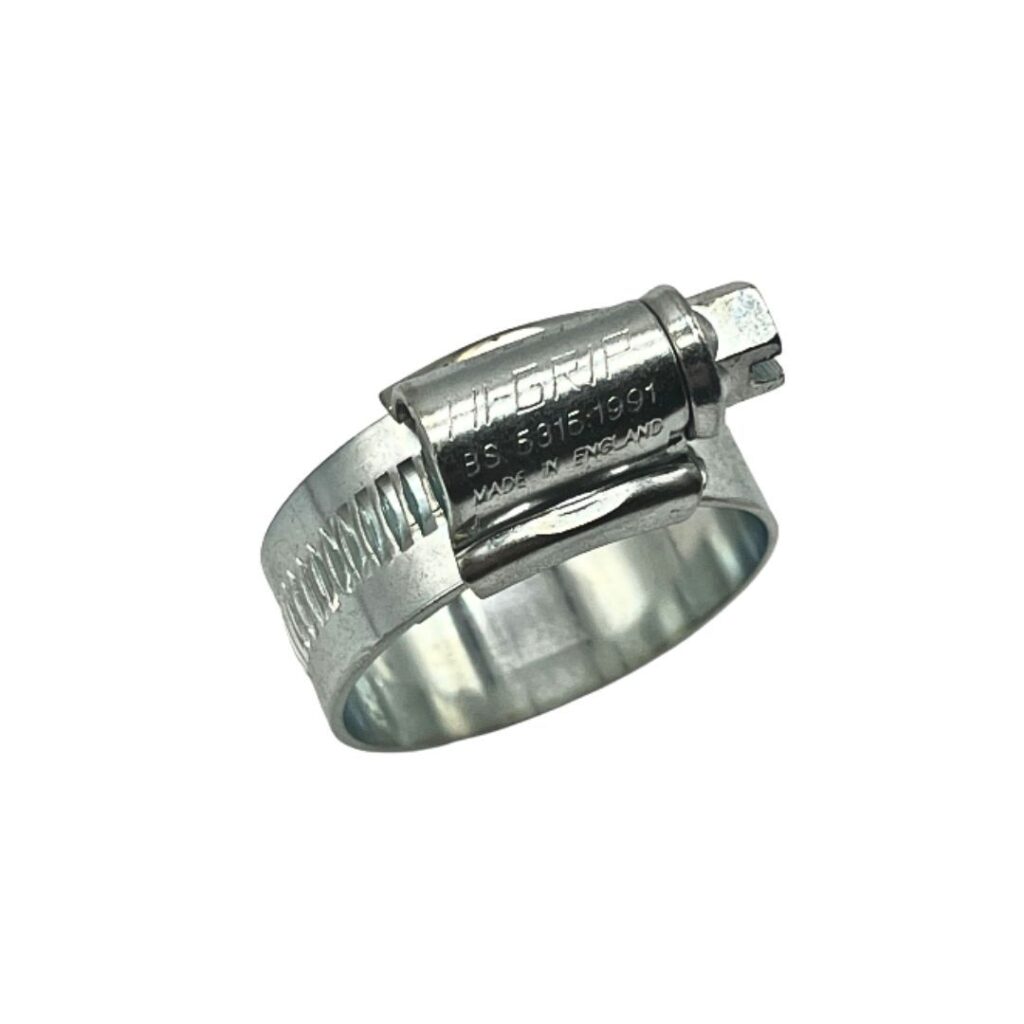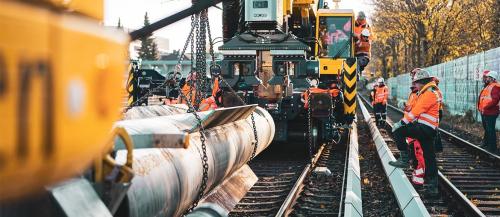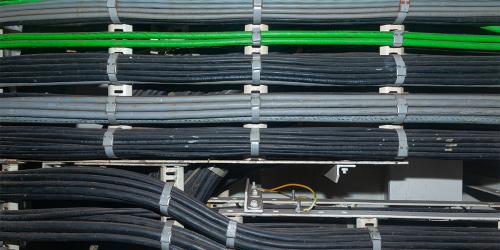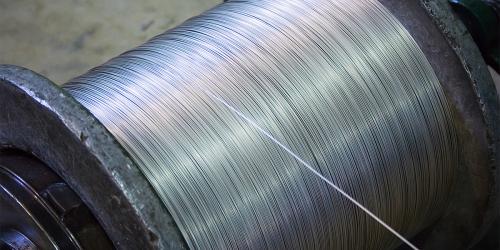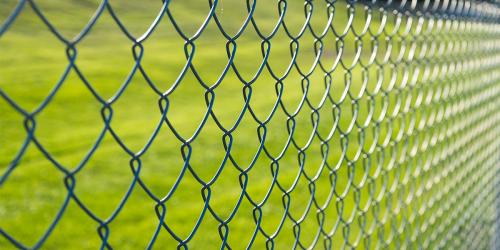Whilst small, we know that hose clips are essential tools in plumbing and construction, being used in various applications to ensure secure connections between hoses and fittings. They can prevent leaks, provide stability, and are easy to use, with these attributes making them a go-to option for professionals and DIY enthusiasts. In this blog, we will explain exactly what hose clips are, their purpose and benefits, as well as provide tips to help them provide long-lasting performance.
What are Hose Clips?
Hose clips are typically made from durable materials that can resist rust, corrosion, and general wear and tear, such as steel. Their primary function is to secure hoses in place and create a seal around fittings. When tightened, these clips apply pressure evenly around hoses, preventing them from slipping off their attachments. This is crucial in applications where fluid or air pressure needs to be contained within the hose, as even minor leaks can cause malfunctions or safety issues.
What are Hose Clips Made From?
There are 3 main types of steel that are used in the construction of hose clips, each having their own benefits:
- Stainless steel: popular for its strength and corrosion resistance, stainless steel hose clips are ideal for construction and plumbing applications, especially in environments that are exposed to water or high levels of humidity.
- Galvanised steel: galvanised hose clips are coated with zinc to further improve their rust resistance, making them suitable for both indoor and outdoor use.
- Mild steel: mild steel hose clips are a less corrosion-resistant alternative to stainless and galvanised clips. What makes this material stand out, however, is the fact that it is both lighter and easier to bend than stainless steel, making it even easier to use.
When Can Hose Clips be Used in Plumbing?
In plumbing, hose clips are used to securely join hoses to fittings, pipes, or pumps. They can be used in the following scenarios:
- Connecting flexible hoses to fixed pipes: hose clips create a secure connection where flexible tubing meets rigid plumbing pipes, which is common in household plumbing, irrigation systems, and industrial pumping setups.
- Sealing joints in water supply lines: in residential and commercial plumbing, hose clips help seal joints to prevent water leaks, which can lead to water damage and costly repairs if not maintained.
- Temporary fixes: When a pipe or joint has a small leak, hose clips can sometimes be used to provide a short-term solution until a permanent fix is found.
Why Should You Use Hose Clips in Plumbing?
- Leak prevention: hose clips provide a reliable, tight seal that helps prevent water from escaping, avoiding water waste and damage.
- Easy installation and adjustment: hose clips can be easily installed with simple tools, making them highly accessible.
- Cost-effective: compared to other sealing solutions, hose clips offer an affordable way to secure hoses and prevent leaks.
- Long-lasting durability: with proper material selection and maintenance, hose clips can provide lasting security for plumbing systems.
When Can Hose Clips be Used in Construction?
Hose clips also play an essential role in construction projects. Applications include:
- Attaching hoses to machinery: construction equipment often relies on hoses for fuel, hydraulic fluid, or air systems, and hose clips ensure these hoses stay securely in place under heavy use.
- Securing temporary water or air lines: during construction, temporary water or air lines are often set up, and hose clips provide a quick and secure way to connect and disconnect hoses as needed.
- Dust control systems: hose clips are used in dust control systems where hoses are connected to vacuums or extraction units, helping to maintain a clean and safe work environment.
Why Should You Use Hose Clips in Construction?
- Safety: Hose clips ensure that hoses remain attached to equipment and systems. This is essential for preventing spills, leaks, or accidental disconnections that could pose safety risks.
- Reliability under pressure: In construction, hoses often handle high pressures or heavy movement. Hose clips maintain a tight grip, even under demanding conditions, to prevent disruptions.
- Easy to replace and adjust: Hose clips are versatile and can be tightened or adjusted as needed. This allows them to be a flexible and adaptable solution for construction sites.
Prolonging the Life of Your Hose Clips
There are several steps that you can take to ensure that your hose clips offer strength and stability for years to come. Firstly, you should always inspect your hose clips for wear and tear to ensure that they work effectively over time.
Signs of Wear and Tear:
- Corrosion or rust: Rust on the clip can weaken its grip and lead to failure, especially in high-moisture environments. Replace rusty hose clips to maintain safety.
- Looseness: If a hose clip no longer holds securely even after tightening, it may have stretched or deformed. Replace any loose clips to prevent leaks.
- Cracks or breaks: Cracked or damaged clips lose their grip. Replace them immediately to avoid safety hazards.
- Wear on the screw mechanism: If the screw mechanism no longer turns smoothly or slips, it may not be able to apply the necessary pressure. If this is the case, then the clip should be replaced.
There are also several maintenance practices that you can use to help keep them in top shape and make certain that they are consistently effective.
Maintenance Tips:
- Regular inspections: Check hose clips regularly for signs of rust, looseness, or other damage. Early detection of wear can help prevent leaks or failures.
- Clean surfaces before installation: Ensure that the hose and fitting are clean and dry before attaching the clip. This will maximise the clip’s grip and prevent slipping.
- Avoid over-tightening: Whilst it is important for hose clips to be tight, over-tightening can damage the hose or fitting, potentially causing leaks. Tighten them just enough to ensure a secure seal.
- Lubrication for adjustment: If you frequently adjust hose clips, applying a small amount of grease to the screw can make adjustment easier. This will help prevent a buildup of rust.
BS Fixings: Your Source of Quality Hose Clips
If you are looking for reliable hose clips, then be sure to browse our collection. Here at BS Fixings, we offer a range of hose clips, coming in various types of steel, to help you find the right kind of clip for the job at hand. Here is a brief overview of what we offer
HI-GRIP® - Stainless Steel Hose Clips
Sold in boxes of 10, our stainless steel hose clips include superior strength and sealing power. The threads of the screw and the band are both cold forged, meaning that the clips are given a higher sealing force and have greater resistance to thread stripping.
HI-GRIP® - Zinc Plated Hose Clips
The zinc plating gives these clips exceptional corrosion resistance, making them suitable for outdoor applications. These are also sold in boxes of 10.
Genuine Jubilee Hose Clip Mild Steel - Box of 10
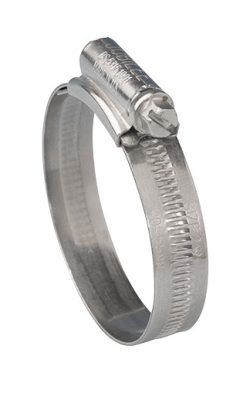
These mild steel hose clips include several helpful features, such as an adjustable worm-drive mechanism, a secure leak-proof connection, and temperature and pressure resistance.
If you want to discover the full extent of what we offer, then be sure to browse our website today. If you have any questions, then don’t hesitate to get in touch with a member of our team by calling 03330 117818 or emailing [email protected].

